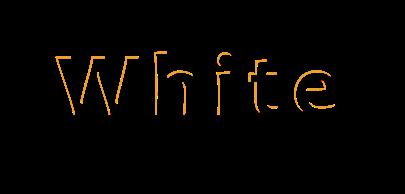




 Suffolk Naturalists ’ Society
Suffolk Naturalists ’ Society






 Suffolk Naturalists ’ Society
Suffolk Naturalists ’ Society
Welcome to this Spring issue of the White Admiral newsletter. Thank you to all those who have contributed to this edition but again I would like to invite more of you to contribute to this members’ newsletter. Your stories and observations are what makes the newsletter what it is! The membership would love to hear your wildlife experiences.
Again, we have a number of articles covering a variety of subjects from Houdini flies to Phallus Fungi plus two observational stories from Trevor Goodfellow and a good news story from Tom Langton on the establishment of a rich wildlife reserve established from the restoration of a mineral pit at Thorington.
Importantly, I would like to draw your attention to the piece written on page 17 about proposed changes to our constitution (highlighted on the enclosed document). Also, we have our first members’ evening of the year coming up on the 10th April, the details of which can be found on page 2. We are also excited to announce that we will have a very special guest speaker at our Autumn members’ evening. Patrick Barkham, Natural History Writer for the Guardian, will be giving a presentation on butterflies. He is the author of Islander, Coastlines, Badgerlands and The Butterfly Isles, so this will be an evening ‘not to be missed’ on the 20th November. Both our members’ evenings will be held at the Cedars Hotel in Stowmarket.
Both of these evenings will be hosted at the Cedars Hotel, Stowmarket, IP14 2AJ. Meeting at 7pm for a 7:30pm start. A tea/coffee break is provided half way through the proceedings.
As well as the formal business associated with the AGM at the Spring Members’ Evening we will have a talk from Paul Read on the Orchards East project as well as updates from other recorders on the night.
At the Autumn Members’ Evening we are delighted to announce that Patrick Barkham, Natural History Writer for the Guardian, will be giving a presentation on butterflies, so please make a note of the date in your diaries.
SNS members are welcome to attend field meetings organised by the Suffolk branch of Butterfly Conservation.
The field meetings programme for 2019 offers 23 events from the Cambridge border (Devil’s Dyke and Red Lodge) right across the county to the East coast (Aldeburgh, Sizewell & Carlton Marshes) and can be viewed on the Events page at: http://www.suffolkbutterflies.org.uk/events.html
The varied programmes cater for beginners as well as serious recorders and naturalists. They are almost all FREE. We hope to see you there!
Suffolk Wildlife Trust has a wealth of excellent courses for adults, all of which are delivered by experienced tutors and are open to all: for those developing their wildlife knowledge and those wishing to dip their toes for the first time in the waters of wildlife in Suffolk. Here is a taste of what is available on the Trust’s website for the next six months, at: www.suffolkwildlifetrust.org/wildlearning
Nettle Appreciation – stinging nettle talk and workshop with Fay Jones at Lackford Lakes, 10.30am-3.30pm on Sunday, April 14th
S Spring Bird ID with Paul Holness at Lackford Lakes, 10am-4pm on Saturday, April 20th
B Bird Migration with David Hodkinson at Carlton Marshes, 10.30am -4pm on Saturday, April 27th
G Gardening for Wildlife with Cathy Smith at Brooke House, Ashbocking, 11am-3pm on Saturday, April 27th
B Bird ID with Paddy Shaw at Lound Lakes, 10am-4pm on Saturday April 27th
S Spring Bird ID with Paul Holness at Lackford Lakes, 10am-4pm on Sunday, May 12th
I Introduction to Wildflower ID with Marie Lagerberg at Mellis Common, 10am-4pm on Saturday, May 18th
I Insect Weekend at Lackford Lakes: Bees in your Garden with Hawk Honey at Lackford Lakes, 10am -3pm, Saturday, June 22nd
I Insect ID for beginners with Hawk Honey at Lackford Lakes, 7am-1pm, Sunday, June 23rd
B Bees in your Garden with Hawk Honey at Foxburrow Farm, 10am-3pm, Saturday, June 29th
I Introduction to Hedgehogs with Paula Baker of Suffolk Prickles Hedgehog Rescue at Lackford Lakes, 10.30am-3.30pm, Saturday, July 14th
To find out more or to book, please follow the web link, call 01473 890 089 or email info@suffolkwildlifetrust.org
Last April I received a number of specimens of the Drosophilid fly Cacoxenus indagator Loew, 1858, from David Basham. He had raised the flies from the nest cells of the solitary bee Osmia bicornis (Linnaeus, 1758) (Red Mason Bee) taken from his ‘bee hotel’ in his garden in Ipswich. This prompted me to investigate more about this unusual fly and came across a study by Erhard Strohm of the University of Regensburg, Germany (Strohm, 2011); the findings of which I have summarised here.
In spring female O. bicornis start to build their nests in thin tube like structures such as those provided by wood boring beetles or indeed by man in ‘bee hotels’. In each tube the female supplies a small amount of pollen and nectar and glues a single egg to it. Then she withdraws a short distance and quickly builds a wall of mud to seal the passage. She repeats this several times, filling the tube with a line of ‘brood cells’, each containing a single egg and a food store. Over the next few months the eggs hatch and the larvae feed on the pollen and nectar. Then they spin a cocoon and metamorphose into adults, before
hibernating through the rest of the year, emerging in the next spring. That is the case unless the cleptoparasite fly C. indagator has discovered the nest, when adult female flies will lay up to eight eggs into each brood cell as it is being stocked by the bee. When the fly larvae hatch they feed on the nectar and pollen before pupating, starving the bee larva in the process, to emerge from their cocoons as adults the following spring.
In most cases at least one bee in the nest survives to adulthood, and breaks out of the nest using its powerful mandibles, passing through many of the brood cells on its way out. This leaves a clear escape route for around two-thirds of the trapped flies. The other third of the flies are trapped by hard dried mud walls 2 to 6 millimetres thick. Each newly adult fly is only about 3 millimetres long, so the wall it must break through may be thicker than its body is long.
The fly’s solution is to painstakingly headbutt its way out. Strohm filmed flies trying to escape from brood cells. He found that each pushed its head into a small crevice in the dried mud, then, by inflating its head broke
pieces off. It manages this by pumping haemolymph (a fluid equivalent to blood in most invertebrates) into the ptilinum (a pouch on its head present in all schizophoran diptera). This technique is used in many flies for breaking out of their cocoons, but C. indagator has taken it a step further, by using greater hydraulic pressures to break the hardened mud. The hole the fly makes is small, but its body is still soft, so it can squeeze its way through. Additionally, the fly must know in which direction to escape and does so by using the shape of the cell
partition as a cue within each cell (the wall nearest the exit is convex and the other is concave). Most of the attempts the flies make to emerge are at the correct side (i.e. the one pointing to the nest entrance). Strohm tested 20 flies in artificial nests, and found that 19 of them focused their efforts on breaking through the correct wall. Of 98 flies Strohm observed trapped in brood cells, not one failed to escape.
Peter VincentReferences:
Strohm, E. (2011) How can cleptoparasitic drosophilid flies emerge from the closed brood cells of the red Mason bee? Physiological Entomology 3 36, 77–83
On February 4th, staring gloomily out at the early morning rain, we were treated to the sight of a kingfisher perched on the bird feeder beside the garden pond. This should have been exciting enough but we had another surprise. ‘No luck here’, I thought, fish have been excluded to encourage other pond wildlife,
though they may have hitch-hiked in somehow. It sat a while, head bobbing as if re-calibrating its vision, studying the pond; that long, sharp beak poised for the job in hand. Suddenly it plunged and re-emerged from the water with a dark object that had obvious legs. It flew to a small tree and proceeded to bash its catch
mercilessly on the branch and trying to swallow it (it reminded me of an experience in Australia watching a kookaburra pinching a sausage and proceeding to ‘kill’ it by bashing it on the branch as it would a lizard). It was not a fish but a newt and eating it was clearly going to be a mission. Of course, I spoilt things by trying to get a photograph and it flew laboriously off with its prize. Last year we were treated to the sight of
The publication of a new volume of the Journal of Breckland Studies, conservation of the Fen Orchid and Suffolk Biological Recording bursaries were the topics for the 2018 Autumn Members Evening held at the Cedars Hotel in Stowmarket on 21st November. The hotel is a great venue, being accessible to members across Suffolk, and providing comfortable and informal surroundings for our regular Spring and Autumn Members’ Evenings.
Martin Sanford described the September publication of the 2nd volume of the Journal of Breckland Studies, for which SNS were pleased to contribute a grant to the Breckland Society.
4 pairs of common newts (Lissotriton vulgaris) doing their courtship dance in a clear area of this pond. I didn’t know Kingfishers ate newts – they are obviously ‘Kingnewters’ as well. We are of course delighted to host all wildlife, both predator and prey, particularly when we get an armchair view on proceedings.
Joan HardinghamThe 2nd volume contains six illustrated papers covering various aspects of the Brecks heritage, an internationally important area. These cover the Breckland Bat project, the history and conservation of shepherd huts, woodland planting on the great country estates pre-1920, the classification and conservation of grasshoppers, the archaeological excavation of a ‘lost’ WW2 prisoner-of-war camp at Eriswell and the decline of lichen communities.
Copies are available from Ceres Bookshop in Swaffham (tel: 01760 722504, email ceresbooks@aol.co.uk) at £9.99 per copy + p&p.


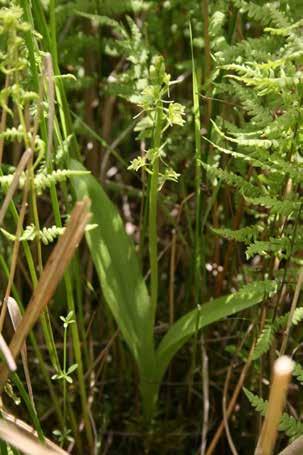
We have funds available through bursaries and grants for a range of studies of Suffolkflora, fauna andgeology. Wewould liketo supportmore projects – if you would like to put your ideas into practice, please contact MartinorGenthroughtheeditortoseehowwecanhelp.
The Fen orchid Liparis loeselii is one of the most threatened plants in northern Europe and, as such, is eligible for Species Recovery Programme funding. Tim Pankhurst from Plantlife travelled to Canada to learn about the ecology of the orchid, giving us an exciting talk
about his travels at the Autumn 2017 Members’ Evening. The write up for this can be found in White Admiral issue 99 Spring 2018.
In this follow up talk, Tim described the current work of the Fen Orchid Partnership, including fascinating studies to understand
the population dynamics of the species, both within sites and colonisation off site.
The research programme, running until 2022, includes partners Plantlife, RSPB, Norfolk and Suffolk Wildlife Trusts, the Ministry of Defence, Royal Botanic Gardens Kew, Cambridge University Botanic Gardens and others.
Targeted reintroductions into the East Anglian Wetlands Important Plant Area have been taking place from 2016 and will continue until the 2019 season.
Dorothy Casey, an experienced botanist and now retired from Suffolk Wildlife Trust, described how attending an advanced plant identification course at Flatford Mill Field Studies Centre (FSC) had been a good experience. She had successfully applied for a Suffolk Biological Recording Bursary enabling her to take her study of Suffolk flora further.
SNS and Suffolk Biodiversity Information Service have collaborated with Flatford Mill FSC to offer these Recording Bursaries for
people over the age of 25. Successful applicants can attend FSC courses on species identification, giving them the skills and experience to identify and record Suffolk wildlife. The courses can be elsewhere in the country if appropriate. The bursaries are designed to encourage people to submit species records and so the funds are only available if the applicant submits a given number of records to Suffolk Biodiversity Information Service after completing the course.
To find out more about the Suffolk Biological Recording bursary visit: https://www.field - studiescouncil.org/centres/flatfordmill/ learn/natural - historybursaries.aspx
A huge thank you to Martin, Tim and Dorothy for sharing their experiences, expertise and enthusiasm!
Gen Broad
The Autumn Members’ evening will be on Wednesday, 20th November at the CedarsHotel, Stowmarket. WearedelightedtoannouncethatPatrick Barkham, Natural History Writer for the Guardian, will be giving a presentation on butterflies. He is the author of Islander, Coastlines, BadgerlandsandTheButterflyIsles.Pleasedojoinus!
It was a bright sunny morning but in the background to this façade was the smell of autumn. As we walked under a canopy of one of our local woods (Great Martin’s Wood in Bentley), we were surrounded by the refreshing smell of gently decomposing damp autumnal leaves. There were still leaves falling from the predominantly sweet chestnut wood and spiny cupules, many split open, abounded, not all worthy of harvest. There was a great deal of birdsong, however the “tee…cher, tee…cher” call of the great tit rose above the rest.
We were not far into the wood when we started to smell something quite unpleasant, an odour of something rotting. It got stronger and stronger, somewhat ‘excremental’, as we continued our leisurely Sunday walk. All sorts of thoughts crossed our minds. We didn’t have to walk more than about twenty yards before suddenly, the originators of the foetid smell were in our sight. Three or four yards to the right of the path were a largish fairly spread out group of fruiting bodies of a basidiomycete at various stages of development standing proud of the leafy woodland floor.
‘Stinkhorn’, I said ‘common stinkhorn’, on recognising the connection to the putrid smell. There they were in their glory (!) or should I say ‘indignity’? I won’t mention what the 16th century botanist John Gerard called it, but its undeniable phallic structure did give rise to its generic name Phallus and the father of modern taxonomy Carl Linnaeus fittingly gave it the specific epithet ‘impudicus’ (‘shameless’).
A few were half - submerged, spherical and resembling pinkish white eggs some 4-5 cm across while a couple had burst showing the gelatinous mass under the skin of the volval sac (Photo 1). Some had recently ‘expanded’, the hollow and somewhat spongy stalk fresh and white and the dark olive-green bell - shaped cap not quite glistening. I reliably use the word ‘expanded’ and not growth (which would not be conceivable) because the whole structure can form very rapidly. The emergence and extension of the fruiting body has been measured at 10–15 cm in an hour!
One or two fruiting bodies were showing signs of liquefaction at the top of the cap (Photo 2). And there
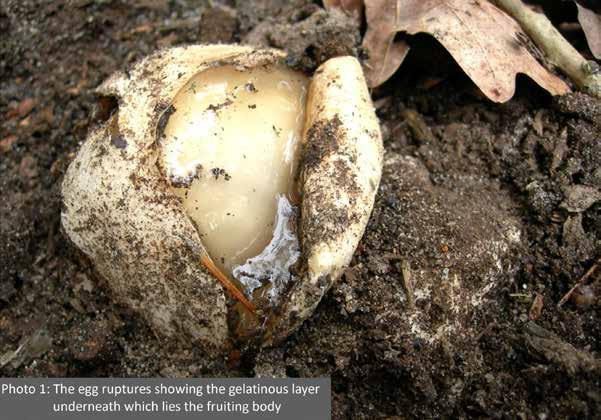


were three or four with sporebearing gleba fully clothed in seaweed coloured mucus, one dripping. It was these which reeked as I fully ‘came to terms with’ when I bent down to take a close-up shot (Photo 3). But they were quite plainly performing the desired function of attracting flies (at night slugs) to traipse on and devour the dark green sugary slime containing spores to effect dispersal. One of them had been completely stripped showing the
underlying reticulate pattern not unlike that of a morel. Despite the ‘stink’, the stinkhorn is not poisonous and at the ‘egg’ stage can be boiled for 15 minutes and safely eaten to enjoy a nutty radishy flavour. However, just as the smell had led us to them quickly, it was equally quick in driving us away to continue enjoying the rest of our walk.
Rasik BhadresaIn 2014 we had a pair of Egyptian geese arrive at our home in Thurston accompanied by four tiny goslings.
I learnt from books that the UK examples originated from imported birds introduced to Holkham Hall estate in Norfolk some time ago and are now successfully spreading and breeding.
I also learnt that they prefer holes in trees as nest sites and this is likely to be the source of the geese that arrived at home. They stayed until the young were flightworthy then they were driven off by ‘mum and dad’ to fend for themselves. The remaining pair stayed for most of the year, leaving for a few
hours at a time. They continued to reject the returning youngsters.
In 2015, Greylag geese commandeered our duck island and the Egyptians were not seen until August, when they returned with five fledged offspring. It was a very busy time, and quite noisy.
In 2016 the pattern was repeated, and it was then that I confirmed my theory that the adult male was ‘our Eric’ by comparing photos from previous years. A clear impression of an ‘X’ on his beak easily identified him from any others I had seen, and his muted quacking told me he was a male, females being quite loud.
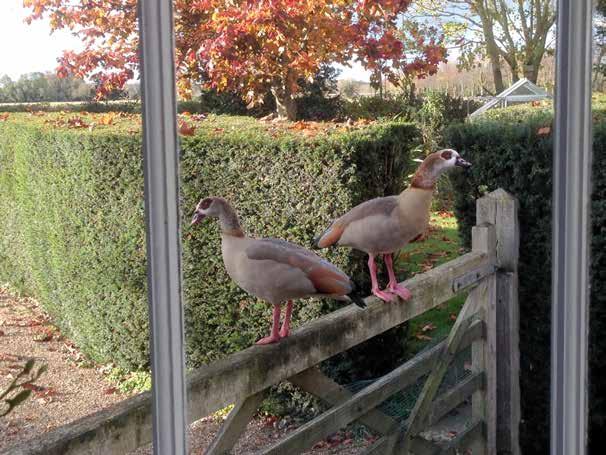
from last year. They were sometimes at my front door with the hens awaiting feed.
2017 gave similar results in habits although the demise of all my bantams, one - by - one to an unknown predator, made both the returning geese nervous. They soon became at ease and although they were relaxed around me, anyone else or even a different car arriving would make them run away. I am convinced that they recognize my car, and often walk towards me as I arrive home.
2018 was a different story as they nested on the duck island in January and struggled with minus 20 degrees centigrade windchill. I was thinking of building a nest box
and after her clutch was completed, she sat for an agonizing sixty plus days. I was just hoping she would give up sooner as the fate of her eggs was undeniable. After a
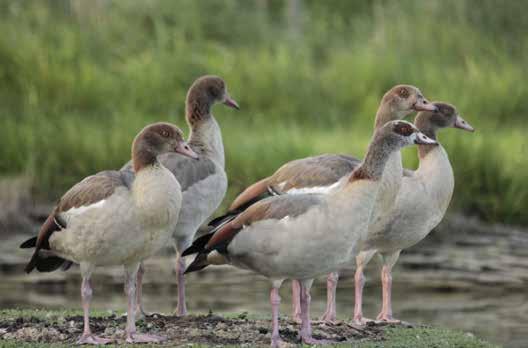
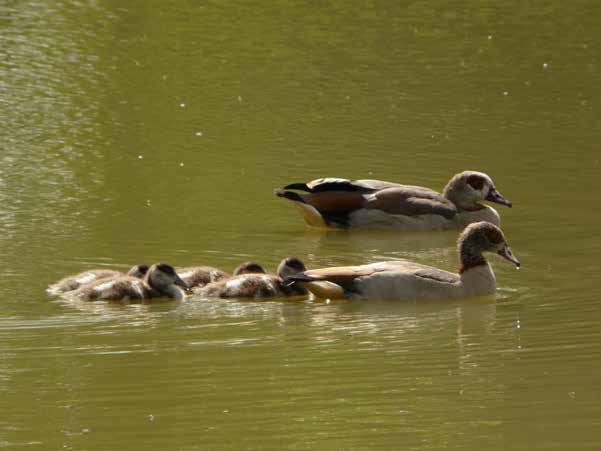
few days of much agitation, when she finally abandoned the nest, I could find no eggs or remains. Perhaps she tipped them into the water? I might have seen that. Predation? Unlikely with the fierce

I also noted that the male (Eric) would make himself inconspicuous, almost hiding in reeds while his mate was sitting on eggs, but fiercely driving off crows, ducks and anything coming near (apart from me).
When nesting away, while the female was sitting, Eric would often return here and wait for her.
On arriving, she would frantically feed and continually quack, then he would escort her back to the nest and return home to roost.
The annual pattern of behavior is almost identical, any changes in habit indicating a stage in breeding season.
Now it is January 2019, three weeks ago they were mating and here we are again: a change of habit as I write, they didn’t show Young ones awaiting flight clearance
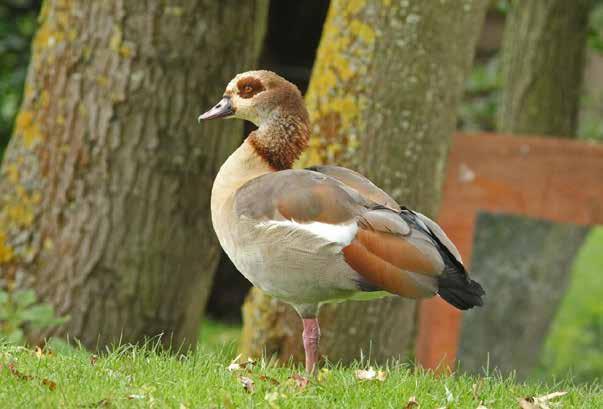

yesterday and today the female has appeared, I hope Eric is ok as he is now at least five years old, I wonder how much longer I will enjoy his appearances.
Trevor GoodfellowOr Bitterns even! OK, perhaps not live, wild birds, but what about their eggs? Now imagine a judge proclaiming that wild birds belong to nobody, they have no owners, anybody can take one and eat it (and their eggs).
Quite rightly, you would be horrified, so why do we not object when foragers trespass into woods or even nature reserves and SSSI’s and National Trust land and take everything that looks like a
mushroom? These foragers will argue that it is no worse than taking the apples from a tree and that in 1217 the law ruled wild fungi belong to nobody.
Around that time, it is estimated the population of England and Wales was 2.3 million - today that figure has reached almost 59 million people and with a high proportion of migrants having come from Eastern Europe, foraging has never been more popular in the
UK. The sad thing is that with organic mushrooms and other fungi like oyster and shiitake mushrooms being readily available in our supermarkets, there is absolutely no need for anybody to pillage from our countryside these days.
Last year, Kew produced their long awaited State of the World’s Fungi Report www.kew.org/state-of-theworlds-fungi and also a video, www.youtube.com/watch? v=tStGvlPGDRA to highlight how important fungi are in our lives. So you can imagine how distressed I was when I read a recent article in the East Anglian Daily Times Environmental section no less, about a wild mushroom grower actively promoting foraging and even going so far to say there is nothing really wrong in going onto private land to take wild fungibecause they do not belong to anybody until you take them and you become the owner. This was the most irresponsible piece of journalism, from an ‘environmentalist’, imaginable in my opinion for it undoes everything Kew have been trying to put across at the stroke of a pen, but then again I doubt very much that the EADT reporter is familiar with the comments on the Facebook fungal community pages
where the foragers attitude is ‘If it is edible I’m having it - private land or not’. Too late, the floodgates are now open for the most determined forager to trespass onto private land with the intention of taking something that doesn’t belong to them in the false sense of security that all they have to say, if challenged, is that they were searching for wild fungi and never knew they were on private land.
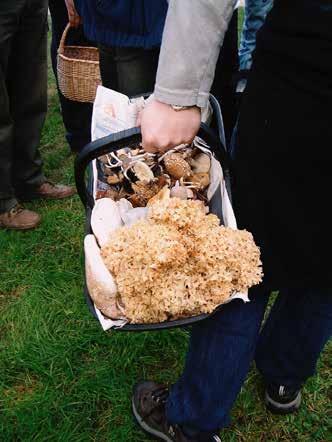
In the last White Admiral, Colin Hawes mentions he does not see the Cauliflower Fungus very often … perhaps this is why?
What if this forager had done their homework and discovered the landowner many years ago had bought impregnated trees from the continent and planted them for the sole purpose of harvesting a crop of prized truffles in years to come? The fungal mycelium may have been present when the trees were purchased but certainly not the truffles. (Did anybody read a recent press report of Prince Phillip successfully harvesting the UK’s ‘first’ ever crop of the prized Perigord Truffles from Sandringham? The transcript could be; trespassing forager to His Royal Highness…”I’m sorry your Highness, I got my hands on these first so they belong to me”. Forager then produces recent article from the EADT).
Surely, trespassing onto private land with the intention of taking something which does not belong to you has to be an offence.
As far as I am aware, no other recorder has to face the problem of people ‘removing for consumption’ what he or she is trying to record, furthermore, half these people do not even know what species of fungi they are taking and in a lot of cases a lot end up in the bin. A lot of foragers still use plastic bags to collect fungi and even if they use the recommended open weave basket, they are usually so overloaded very few spores will
escape. Only a tiny fraction of what is collected will end up on a database and many rare species will be cut off or pulled up given a quick look, and be thrown away.
The theory that taking wild fungi does absolutely no harm to the underground mycelial network is not always true. When I discovered the extremely rare Candelabra Fungus - somebody returned to the site and removed the entire clump – and 6 years on it still has not grown again.
So it is time to change attitudes and do away with the old analogy of comparing taking wild fungi to that of taking an apple from the tree and instead be more realistic and compare it to taking birds eggs - the common cultivated Agaricus bisporus being compared to battery chickens eggs, Oyster and Shiitake mushrooms to Duck or Goose eggs and the more rare edible fungi like Hericium erinaceum (Bearded Tooth fungus) to rare birds such as the Golden Oriole or even Hen Harrier. Despite being one of only four species of fungi fully protected by law in the UK, foragers still regularly target the Bearded Tooth (also called ‘Lions Mane’ in USA).
A change in the law with stiffer penalties is long overdue.
Neil MahlerWith this issue of White Admiral you should have received a draft revised version of the SNS constitution that we would like to propose for approval at the AGM on 10 April 2019. It has been 10 years since the last version was produced and Council felt it was time to update the wording to make it easier to understand, to clarify our objectives and to make it easier to retain elected members of Council for longer. All substantive changes are highlighted in blue on the new draft version; if you want to see the original text from the 2009 version, it can be downloaded from: www.sns.org.uk/ files/pdfs/Consititution%20May% 202009.pdf To read this file you will need Adobe Reader, if you don’t already have this it can be downloaded it from: www.adobe.com/products/acrobat/ readstep2.html
There will be time during the AGM to discuss these changes, but if you have concerns about the proposals and are unable to attend the AGM, or wish to discuss them in private, please contact me or Gen by email to enquiry@sns.org.uk, by phone (01473 433547) or in writing to SNS, c/o Ipswich Museum, High Street, Ipswich, Suffolk IP1 3QH.
I hope we can take a vote to approve these changes en bloc, but if members wish to debate any particular item and vote on it separately, that can be arranged on the day.
One area that has been somewhat contentious in the past is attempts to formalise our relationship with other organisations. The new draft constitution has removed clause 3.9 from the 2009 version:
3.9 There shall be a presumption against formal affiliations with other natural history organisations, asthesearelikelytopasslegalandfinancialresponsibilitiesto the Society and its Trustees. The Society currently has no such formal affiliations (the relationship with the Suffolk Ornithologists’ Group is a cooperation between two independent organisations). Any formal affiliations must be agreedbyanAGM.
Council are still agreed that the Society should not have official ‘affiliations’ or other agreements that might imply that we take on the risks of another body or endorse all the views expressed by them. However, we felt it was important to be able to offer support and encouragement to
other natural history groups in the County, where their aims coincide with our own. We have therefore expanded clause 2.3 in the new draft constitution:
2.3 To liaise with a and, where appropriate, support other natural history societies and conservation bodies working within the County and furtherafield.
I think this will enable the Society to continue its role as an ‘umbrella’
for the many special interest groups working in Suffolk without taking on any extra legal burdens or insurance risks. Council can decide what support is appropriate in each case and it does not prevent proposals for closer working being brought to a future AGM for approval.
Martin Sanford - SNS ChairmanAn outstanding Suffolk Biodiversity & Geodiversity reserve, established from mineral pit restoration at Thorington.
The retention and restoration of mineral sites has offered benefits to many scarce and declining animal and plant species in East Anglia and has been championed by some of the extraction industries (Giles 1992, Crick et al. 2005). In north east Suffolk there has been a restoration of a sand and gravel pit and surrounds at Thorington (TM 423 728). The pit was opened to sell sand, gravel and stone and was run by the Amy Roadstone Company, then Hanson from around 1989 until 2004, when the pit was closed.
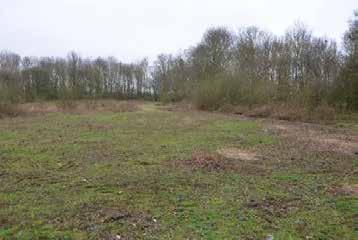
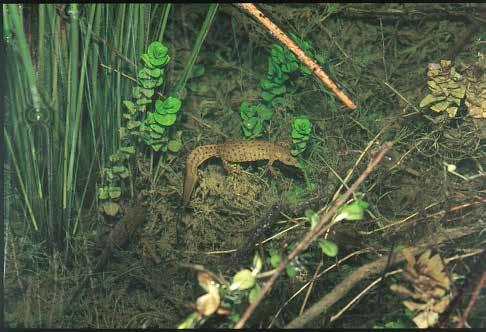
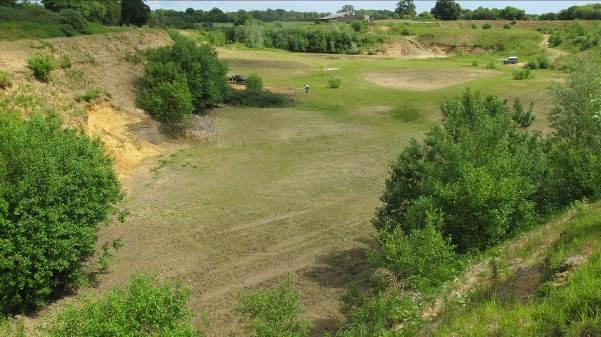


Positioned 8 km west of the coast on the sand/clay interface, the farmland, now called Park Farm was once part of the larger Thorington Hall parkland, sitting on the west side of the A12 close to Bramfield and Wenhaston, between Walberswick National Nature Reserve and the old market town
Halesworth.
Since the mid 1990s and over 25 years, amphibianfocused but effectively multi-species nature conservation and geodiversity enhancement management actions have been carried out. These include wetland restoration and creation, on -site transfer of soils, planting & seeding for aquatic and terrestrial habitat enhancement/construction/ restoration. Work has been supervised for new owners Hanson and Hillfairs farming by the ecology company Herpetofauna Consultants International. Work has followed planning conditions from Suffolk County Council with some
actions under licence from Natural England. This has resulted in the formation of a wildlife matrix area approaching 30 hectares, holding what could well be the largest population of great crested newt Triturus cristatus (GCN) in the three counties of Norfolk, Suffolk and Essex.
The main pit void has nationally significant biostratigraphical and sedimentological evidence for past depositional environments from what was an early estuarine environment. Features are associated with the Westleton Beds Member of the Early Pleistocene Norwich Crag Formation. Fossil animal remains and slope exposures make it a site of high geological and paleontological interest.
Once the pit was worked-out around 15 years ago, land was made safe and the steep cliffs and deep cold water (with sheets of bright green algae) were removed. There was a modest degree of infilling and re-profiling of the core area, nevertheless retaining the sheltered heterogeneous pit character. Land passed to two new land owners, part to the national Waste Recycling Group and part to Hillfairs local farm business. Hillfairs set about the restoration of Earth Holes Wood and its surrounds including storage areas
and a settling lagoon with removal of metal scrap grading towers and other structures, pond digging, tree planting and ground ripping of compacted areas to allow natural regeneration.
The main pit void was restored, not back to agriculture according to the original plan but through special negotiation with the County Council to nature conservation after-use partly. An even, dish-like depression could have been formed at greater expense, but this would have been difficult to farm. The cheaper alternative restoration to nature conservation fitted with habitat and species recovery targets of Suffolk County and government. By 2004 the grassy bunds of overburden and much of the pit were already established and home to a growing list of wild species, some with legal protection. Surveys for example had shown that the invertebrate fauna recorded is of at least county importance. The scale of interest, and the unusual character of some of the features, make an assessment of regional significance for invertebrates appropriate. For example, the dragonfly assemblage has good breeding populations of at least eleven species. Exposed sands show habitats for multiple sand burrowing species.
Sand and gravel winning slowed considerably after 2002 and ended in 2004. The final phase of the ecological work involved the capture and exclusion of reptiles, amphibians and other animals from the mineral areas and holding them out until habitat restoration/ landscaping had been completed. Plants from the pit lakes were used to stock new ponds. The land work included the re - spreading of woodland topsoil and the creation of six large new ponds in 2007 including several within the open core of Earth Holes wood and the former aggregate storage area.
Over the period from the mid 1990s and progressively, around 35 ponds have been constructed or restored across the pit, within and around Earth Holes Wood with an arable-grassland reversion field to the west of the wood. This added much value and scarce pasture grassland to the habitat matrix. Over 1 km of new hedges have been planted. Earth Holes wood has some large coppice stools, dog’s mercury and primrose in the ground flora and contains a number of low earthworks, at least one of which, a former woodbank appears to be have medieval or earlier origins. It is at the edge of the former Thorington Park (Hall now demolished) once at the centre of one of the larger estates in
Suffolk. The wood originally comprised ash/hazel coppice beneath oak standard and was later extended to the west, mainly with hornbeam coppice. The wood was subsequently planted with sweet chestnut and is now growing back into a cohesive unit after twenty years of severe disturbance. The complex of habitats has an excellent range of rare and legally protected vertebrates including three species of reptiles, four amphibians, many mammals and birds including house and sand martins, barn owl, marsh harrier; it being an inland foraging area for coastal birds. It has developing scrub areas. In fulfilling the aims of the planning conditions the great crested newt population is now extremely large with peak spring night counts for the ponds of over 800 individuals. This very remarkably makes it as big, and possibly larger than the nearby Dews Ponds SSSI, with national and international significance. As the indicator species on the wetland and terrestrial habitat restoration and creation project the results could hardly be better and it is an example of how, despite failure of an unacceptable proportion of projects, licensed mitigation by government can sometimes bring spectacular
localised benefits for nature conservation.
Please note that this is a privately owned site with mobile security patrols. There is no public access
References:
other than via landowner permission: Hillfairs and FCC Environment Limited.
Tom Langton tl@langtonuk.co.ukCrick et al (2005) Hampton Claypits to Wildlife. O &H Hampton, Peterborough.
Giles N. (1992) Wildlife after Gravel. TGC and Amy Roadstone Company Ltd. Hampshire.
The majority of SNS members will be aware that our founder Claude Morley collected an enormous number of insects during his lifetime (1874-1951). After his death his collections were deposited in the Ipswich Museum, where they are to this day. The museum has, of course, other collections too and many, including large parts of the Morley collections, still need to be catalogued and documented. Since March 2018, I have become one of the Colchester & Ipswich Museum Volunteers and have been cataloguing the Morley collection of Aquatic Bugs, the HemipteraHeteroptera.
The museum runs a website: www.colchesterandipswichmuseu ms.volunteermakers.org where
people can sign up to volunteer. You do not have to be a specialist either as there are many tasks which anybody can do to help, including some which can be done at home. As far as the Morley Aquatic bug collection is concerned, despite the length of time that the collection has been there, the museum does not have a list of the specimens nor the data linked to each. So, my task is first to go through every specimen and check that the identification is correct, in several cases it wasn’t so that specimen had to be relabelled and relocated within the cabinets. Then the data for each specimen; collector’s name, location, date and any other information are entered onto a spreadsheet which can be
eventually stored in the museum archive.
The specimens I am dealing with date back to the 1890s and though most are in really good condition some have been attacked over the last 130 years or so by other insects. So, one other important piece of information to include is an estimation of the condition of the specimen and, for each species representative macro photographs are taken which will be added to the museum database. Of course, though most specimens were collected by Morley, others were given to him by fellow collectors and not all were collected in Suffolk as he journeyed widely across Norfolk, Essex, Wales, Ireland and the New Forest. So, my final task, aided by Morley’s own diaries will be to contact local Biological Record Centres and museums in those other areas to advise them of the existence of the collection. In addition, once each drawer is finished it will be put into the deep freeze to ensure there are no insect pests left alive to eat any further specimens in the near future.
This is of course a painstaking process which takes a long time but gives a considerable satisfaction in that I am helping to improve the museum catalogues using the knowledge I have built over the
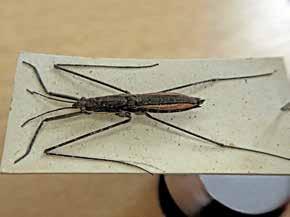

years and leaving something tangible for the future. As well as benefitting the museum another important aspect of my work is what I have learnt on the way, much of which I will need to analyse when comparing my spreadsheet with Morley’s own diaries. I look forward to deciphering more of his collecting locations and methods in this way for his handwriting on the specimen labels is not the easiest to read and is often abbreviated. Also, of course, I can see which

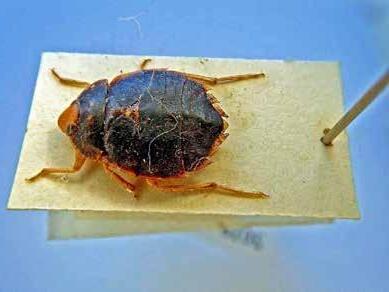
species were found in the county a hundred years before I first started identifying them, comparing his list with mine has thrown up several interesting facts. There are many species which spring to mind although space here will only allow me to pick one or two, but hopefully the next edition of Suffolk Natural History will allow a full description of my results.
The first species that made me sit up and take notice was the pondskater Aquariusnajas. This is a species that I’ve seen many times in vast numbers in Wales but as far as I was aware it has never been recorded in East Anglia, so I was not surprised that most specimens were collected by Morley in the New Forest, a known location for it. However, there were several unmistakeable specimens
from 1898 which Morley collected from the River Stour along the Suffolk Essex border. The habitat at these locations seems to be typical of the areas where I have seen A. najas elsewhere in Britain, but I have frequently surveyed those same Stour locations myself and there is no trace of it any more. Another interesting species is the corixid bug, Sigara venusta. After many years of recording corrixids I find this is possibly the least likely species to turn up in Suffolk, but I was interested to see if it may have been more common at the start of the 20th century and had declined before my time as a recorder. In fact, Morley had only collected this species once at Bixley Heath in 1897, so it may well be that it was always a very occasional species in the county.
In the same way, a species I have always hoped to find somewhere in Suffolk is the River Bug, Aphelocheirus aestivalis. I have found this over the border in Norfolk, but all suitable looking Suffolk rivers have been searched without success. Surely, if this was a creature that had been more common in the 19th or early 20th century then it would be represented in the Morley collection. Well it was there but as only a single specimen which had been found in Hampshire, showing that Morley was aware of the species and therefore, I assume, his collecting methods extended to non-flying bugs living in the river substratum. Since a lot of his specimens bear the note ‘At light’ I know he collected with a sweep net but had
little evidence that he employed kick sampling.
In conclusion I must also say that the backroom staff of curators and educators have all gone out of their way to be helpful, encouraging and could not be friendlier; and my special thanks must go to Kathryn Riddington who has taught me much whilst providing encouragement whenever needed. I certainly would not have any hesitation in recommending volunteering as a worthwhile enterprise to any SNS members with a little time to donate to a worthwhile cause.
Adrian Chalkley, SNS Freshwater Invertebrate RecorderWe moved into a new house with a ‘country garden’ covered in snow, in mid-January 2017. Our wishful thoughts of long bird lists, small mammals and perhaps even the odd reptile were soon dashed by the neighbours, who wasted no time in telling us that the previous owner had religiously mowed. Every. Single. Day. As the snow cleared, we found piles of lawn
fertiliser, mowing paraphernalia, the shortest of short lawns and carpets of moss. Very little wildlife emerged from the frost. On the advice of friends, we left the garden – unmown and untended. Spring rolled round, and we started to see some life; rabbits and pigeons were the first to arrive in the now dog-and-cat free space, common frogs and newts inhabited
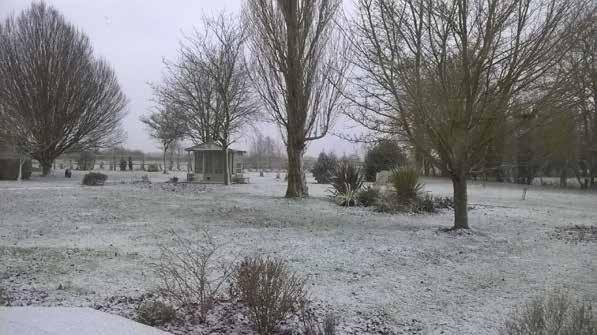
a small pond, wood mice were found in small mammal traps (both inside and outside) and by summer we had moles and magpies everywhere. The neighbours recommended this trap and that poison, but I politely declined - we were playing a very different game. We put out bird feed, built hedgehog habitats, reptile stumperies, mowed carefully, planted wild flower mixes, and hung insect homes but saw no more improvement. Disappointed that our efforts hadn’t yielded much more as the winter rolled in. So, we gave up our re-wilding dream to focus on our distinct lack of heating. But the surprise finding of a great crested newt on the lawn in February re-focused us on the idea of a much larger pond – which
became a great crested newt breeding site by summer. And very slowly, before we’d realised it an abundance of rabbits, pigeons had lured in buzzards, sparrow hawks and foxes. The song birds were building up, tree creepers were spotted, deer tracks were found. The lack of mowing had left seeds for voles and shrews which were often heard but rarely seen. By the 2nd summer the young wildlife, looking for its own patch, had wandered carelessly in. Newly hatched grass snakes were spotted on the patio, young stoats were hiding under the car, and little hedgehogs were wandering the newly created vegetable patch.
To the relief of the neighbours the rabbits, moles and pigeons have gone down somewhat in numbers

now they’re sharing their food resource and hiding a little harder from predators. But after two years, and very little mowing,
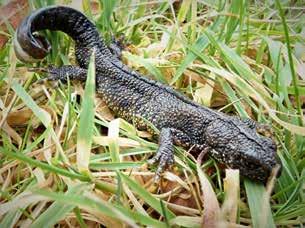 Jenni Fincham
Jenni Fincham
In my review of ‘The Lost Words’ (White Admiral 101) I considered it to be ‘one of the most important natural history books published in recent years’. I now have to add the two in the title, both on the 2018 shortlist for the Richard Jefferies Literature Award. The first, with over 300 pages, is ‘Wilding’ by the appropriately named Isabella Tree. In one sense this follows the recent ‘Rewilding’ book by George Monbiot but here the focus is on the Knepp estate near Worthing. A decision was made to radically change the management of land failing to produce sufficient profits from normal agricultural use. The experiment, a project covering
3,500 acres to step back and let nature take over, becomes a triumph of persuading large conservation groups to ‘get on board’ though on the way there are many differences of opinion such as declining the RSPB’s help in supplementary feed for endangered turtle doves as it was felt not suited to their land conditions. There is also a long and wellargued section about the importance of scrub, questioning the long-held belief that our land was once heavily covered by primeval forest, sometimes known as Anderida.
Along the way there is a sometimes remarkably quick increase in species numbers, at a time of
national decline. These include an impressive 13 out of 18 bat species, some on the red list, turtle doves, nightingales, silver - washed fritillaries (‘shafts of sunlight spun with the dust of butterflies’) and the estate now being the best national site for purple emperors. One reason is the taking of advice from many experts, especially those closely involved with a similar but larger experiment in Holland. An early chapter has its focus on Ted Green, veteran tree campaigner, and adopting a mindset where a dying oak, habitat for many rare species, assumes ‘a kind of sculptural, metaphysical grandeur’. There is discussion of a wide range of wildlife, from rutting fallow deer to championing ragwort as a rich source for many feeding insects. The significance of beavers in flood control is discussed and other issues arising include strong local opposition to the whole rewilding concept and having to keep footpath walkers safe from close feeding Tamworth pigs and Shetland ponies. There is emphasis on the need for ‘dynamic ecosystems’ rather than concentration on individual species and, referring to ‘The Lost Words’, the comment that present childhood is often having ‘an extinction of experience’ in the natural world, so that many adults will ‘regard na-
ture as hostile or irrelevant and are indifferent to its loss… depriving the environment of its champions for the future’.
I shall definitely be visiting the area this summer.
Mark Cocker’s book ‘Our Place’ is of a similar length and has the subtitle ‘Can We Save Britain’s Wildlife Before It Is Too Late?’. Starting in Norfolk, with his land near Brundall and along North Norfolk’s string of nature reserves, he explores many different parts of the country in a very comprehensive study of the history of our major conservation groups, exploring their failings and successes, such as a detailed study of the Kinder Scout trespass and its consequences. Then, a long section explores the eventually futile attempt to cover the Flow Country in Scotland with conifers. He has the courage to list celebrities taking part in this scheme, using a tax loophole, and even more courage is shown in one of his many studies of rare and protected birds. He details the shooting of two hen harriers on the Royal Sandringham estate, witnessed by birdwatchers, and goes on to name the likely culprits. Often, he has to use fairly long lists of statistics and names, but always knows when to stop and return to direct observations of
wildlife. He also uses humour well - experts discussing ‘urtica’ when they really mean the common stinging nettle and relating how the public’s interest in mating ospreys was increased when a ‘menage a trois’ was found: ‘the more they resemble us, the more the public seem to care’, like ‘an avian Eastenders’.
The final twenty pages are a recapitulation cum summary of ten ‘interlocking truths that are fundamental to the story of British
Details:
nature in the twentieth century’. For anyone interested in the history of our main wildlife and conservation bodies this is essential reading, enriched by the superb descriptions of wildlife such as that for the adder: ‘sudden zigzags of writhing silver which seem like encoded messages from another realm’.
Richard Stewart‘Wilding’ by Isabella Tree, pub. Picador, £20. ‘Our Place’ by Mark Cocker, pub. Jonathan Cape. £18-99. From a Tiny Acorn
I have lived in Thurston for eleven years and in that time, a certain ancient oak tree has been capturing my attention.
Although there are several around me, some over 400 years old, this struggling oak is special.
Despite the dead limbs, and being hollow, it continues to support life while its own is fading. It must be said that it is likely to outlive me, as it sheds its dead branches one by one. Indeed, the much bigger and healthier neighbouring oak,
just a few metres away, dropped a massive bough recently for no apparent reason.
I have watched barn owls nest year on year and I never tire of watching them hunt, especially when they are feeding young.
As the tree is also hollow, a removed low branch many years ago, is now a hole, and has become a barn owl nest site which faces south and squirrels or a stock dove’s nest in a hole facing west. Not only that, but great spotted

woodpecker and great tit have also nested, all in the same year.
I have read that a single oak tree was found to support up to 284 insect species alone, to that total we can add several birds and mammals. Some of the eighteen species of shield bug I have recorded have been seen in this tree. In fact, many of the oak’s supported insect species are totally oak-specific like gall wasps and leaf miners. A favourite of mine is the purple hairstreak butterfly (Favoniusquercus) which ‘my oak’
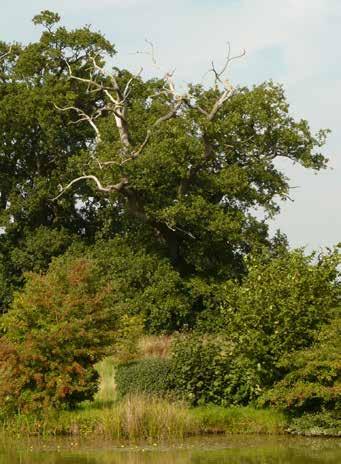
certainly hosts. This small butterfly lives in the canopy and can occasionally be seen flying at low level but preferring to walk amongst the leaves in search of honey dew to feed on and short spiralling flights at mating time. If this oak was part of a plantation, it could be a ‘king tree’ for rallying male purple emperors (Apatura iris), another elusive high flier, although their larval foodplant is sallow.
Passing birds e.g. heron, corvids, doves and cormorants, perch on the
oak’s highest bare branches and great spotted woodpecker like to drum on the hollow parts making quite a din at times. In the winter (see photo), a stock dove is perched on the tree top while a barn owl sits in its nest hole (a white dot low on the right-hand side).
Curious contorted acorns often appear: knopper gall and oak apples, the result of gall wasp activity.
The holes and crevices are home to bats and treecreepers and sometimes hibernating butterflies, leaving very little of the tree uninhabited. Even below ground, subterranean fungi assist the tree
absorbing nutrients in a mutual contract of ‘back scratching’.
From my observations, I believe that the oak tree (or any tree) has a value which may be overlooked, and in the case of an old oak, it has immense value for a very long time even well after it has fallen and rotted away.
So next time you see a mighty oak, reflect on the importance of such a noble tree, if it could talk - imagine what tales it could tell. Go on give it a hug!
Trevor GoodfellowThere is a new home for the digital editions of the White Admiral back numbers. Following the recent push to digitise all back numbers of the ‘Transactions of the Suffolk Naturalists’ Society’ (Suffolk Natural History) on the publishing website ISSUU we have created a new ‘stack’ for the White Admiral. All the recent copies are now added to this stack with older issues gradually being scanned and added for future reference going forwards.
You can find the stack of White Admiral newsletters at the following web address: https://goo.gl/P6XGsn If you are logged in with an account on ISSUU you can follow the stack and easily see when more content is added. Why not check it out?
Ben HeatherBeach Bonkers’ 2019 beachcombing programme is now available to view online: https://www.beachbonkers.org.uk/come-to-the-beach/ There are 16 beachcombs, 5 beachcombing days, 4 beach cleans, and 1 beachcombing & art workshop to name just a few of the events. Here are a few listed below. More information on the website.
B Beachcombing on Felixstowe beach - Saturday, April 6, 2019 10:30 am12:00 pm
B Bringing the beach to Haverhill library - Tuesday, April 9, 2019 11:00 am1:00 pm
B Bringing (another) beach to Dunwich Heath National Trust - Wednesday, April 10, 2019 11:00 am - 3:00 pm
B Beachcombing (day) on Sizewell beach - Friday, April 12, 2019 10:00 am3:00 pm
H Help clean up the beach (Landguard)! - Saturday, April 13, 2019 10:00 am - 12:00 pm
B Beachcombing on Felixstowe beach - Saturday, April 13, 2019 2:00 pm3:30 pm
Take a look at www.sns.org.uk/pages/bursary-f.shtml for a list of the FSC courses that are being supported by the SNS/SBIS Recording Bursary in 2019. These book up quickly, so don’t delay!
Deadlines for copy are: 1st Feb (Spring issue), 1st June (Summer issue) and 1st Oct (Autumn issue)
The Suffolk Naturalists’ Society offers six bursaries, of up to £500 each, annually. Larger projects may be eligible for grants of over £500 – please contact SNS for further information.
Activities eligible for funding include: travel and subsistence for field work, visits to scientific institutions, scientific equipment, identification guide books or other items relevant to the study.
Morley Bursary - Studies involving insects (or other invertebrates) other than butterflies and moths.
C Chipperfield Bursary - Studies involving butterflies or moths.
C Cranbrook Bursary - Studies involving mammals or birds.
R Rivis Bursary - Studies of the county's flora.
S Simp son Bursary - In memory of Francis Simpson. The bursary will be awarded for a botanical study where possible.
N Nash Bursary - Studies involving beetles.
Applications should be set in the context of a research question i.e. a clear statement of what the problem is and how the applicant plans to tackle it.
Criteria:
1. Projects should include a large element of original work and further knowledge of Suffolk’s flora, fauna or geology.
2. A written account of the project is required within 12 months of receipt of a bursary. This should be in a form suitable for publication in one of the Society's journals: SuffolkNaturalHistory , Suffolk Birds or White Admiral .
3. Suffolk Naturalists' Society should be acknowledged in all publicity associated with the project and in any publications emanating from the project.
Applications may be made at any time. Please apply to SNS for an application form or visit our website for more details www.sns.org.uk/ pages/bursary.shtml.
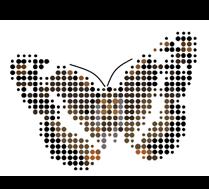
The Suffolk Naturalists’ Society, founded in 1929 by Claude Morley (1874 -1951), pioneered the study and recording of the County’s flora, fauna and geology. It is the seed bed from which have grown other important wildlife organisations in Suffolk, such as Suffolk Wildlife Trust (SWT) and Suffolk Ornithologists’ Group (SOG).
Recording the natural history of Suffolk is still the Society’s primary objective. Members’ observations go to specialist recorders and then on to the Suffolk Biological Records Centre at Ipswich Museum to provide a basis for detailed distribution maps and subsequent analysis with benefits to environmental protection.
Funds held by the Society allow it to offer substantial grants for wildlife studies.
Annually, SNS publishes its transactions Suffolk Natural History, containing studies on the County’s wildlife, plus the County bird report, Suffolk Birds (compiled by SOG). The newsletter White Admiral, with comment and observations, appears three times a year. SNS organises two members’ evenings a year and a conference every two years.
Subscriptions to SNS: Individual membership £ £15; Family/Household membership £ £17; Student membership £ £10; Corporate membership £ £17. Members receive the three publications above.
Joint subscriptions to SNS and SOG: Individual membership £ £30; Family/Household membership £ £35; Student membership £ £18. Joint members receive, in addition to the above, the SOG newsletter The Harrier.
As defined by the Constitution of this Society its objectives shall be:
2.1 To study and record the fauna, flora and geology of the County
2.2 To publish a Transactions and Proceedings and a Bird Report. These shall be free to members except those whose annual subscriptions are in arrears.
2.3 To liaise with other natural history societies and conservation bodies in the County
2.4 To promote interest in natural history and the activities of the Society.
For more details about the Suffolk Naturalists’ Society contact:
Hon. Secretary, Suffolk Naturalists’ Society, c/o Ipswich Museum, High Street, Ipswich, IP1 3QH. Telephone 01473 400251 enquiry@sns.org.uk